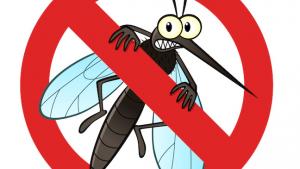-
Our Community
-
- About History - Bowman Museum Chamber of Commerce Organizations Civic Groups Crook County Foundation Resources Cascades East Transit St. Vincent De Paul Videos We Are Prineville
- Events and Activities City Calendar Recreation Events Recreation Parks and Trails Directory Recreation Programs Wetlands County Services Crook County GIS Crook County Library Crook County Landfill Building Permits
- Schools Crook County School District Powell Butte Charter School High Desert Christian Academy City Projects Directory Public Safety Prineville Police Department Crook County Sheriff's Office Crook County Fire & Rescue Community Notification System
-
- Doing Business
-
City Services
-
- Boards and Committees Planning Commission Budget Committee Railroad Commission City Council Agendas and Minutes Meeting Information Resolutions Ordinances Codified Ordinances
- Departments Airport City Administration Building Permits Code Enforcement Community Development Crook County 911 Finance Human Resources Meadow Lakes Newsroom Police Public Works Railway
- Contact the City Submit a Request or Concern City Offices Staff Directory Contact your City Council Public Records City Records Police Records
-
-
How Do I?
-
- Job Opportunities Alerts and Notifications Email Subscriptions Events and Meetings Agendas and Minutes Calendar Water Conservation
- Contact the City Submit a Request or Concern City Offices Staff Directory Contact your City Council Title VI Notice Code of Ordinances Documents and Forms Documents and Reports Forms and Applications
- Social Media Facebook Twitter In the News City Newsroom Pay Bill Online E-Billing Sign Up Emergency Alerts
-
Mosquito Control a Priority at Crooked River Wetlands Project
June 8, 2016 -- Prineville, Oregon
Presently under construction just off NW Rimrock Loop in Prineville, the Crooked River Wetlands Project came about through innovative and environmentally-conscious thinking by the City of Prineville. Faced with a mandate to expand and improve its wastewater treatment capabilities, the City saved taxpayers over $57M by creating a wetlands zone along the Crooked River.
The City is creating 120 acres of ponds and lagoons which will utilize the natural environment to treat
wastewater. Additionally, the riparian environment is being improved along the river benefiting salmon and
steelhead reintroduction, over five miles of hiking trails are being added, and educational kiosks are being
designed to promote educational awareness, environmental sustainability, and fitness.
Many community members have expressed enthusiasm for the project – but there has also been concern about creating an enhanced environment for mosquitos – which have been a problem in that area.
This concern was on the City’s radar long before the Wetlands Project began earlier this year. Eric Klann, City
Engineer, said “Mosquitos have been a problem in that area so, to better understand the extent of the problem, the City has been trapping and monitoring mosquitos every week during the summer for the last six years. There are other incubators of mosquitos in that area too – flood irrigation and old, wet tires are great breeding grounds. Our goal with the Wetlands is to make sure that we don’t add to the problem.”
That mosquito data was used by the architectural firm as they began designing the ponds and lagoons that
comprise the Wetlands. Mike Kasberger, Assistant Engineer with the City, explained how the design is quite
unique and effective.
“Mosquitoes breed around the edges of ponds where the water is stagnant, not moving. Using new research,
the architects designed a unique, sharp slope to the pond banks that keeps the water moving and doesn’t allow water to stagnate,” said Kasberger.
Additionally, Crook County’s Vector Control District participated in the design phase of the project to ensure
that control treatments will be easy once the project is complete. The data history, along with future collected
data on the mosquito population, will help the District determine the type and quantity of control necessary. “The City has planned and budgeted accordingly to deal with the mosquito problem going forward. I fully expect that both visitors and local residents will have an enjoyable experience once the project is completed,” said Eric Klann.

